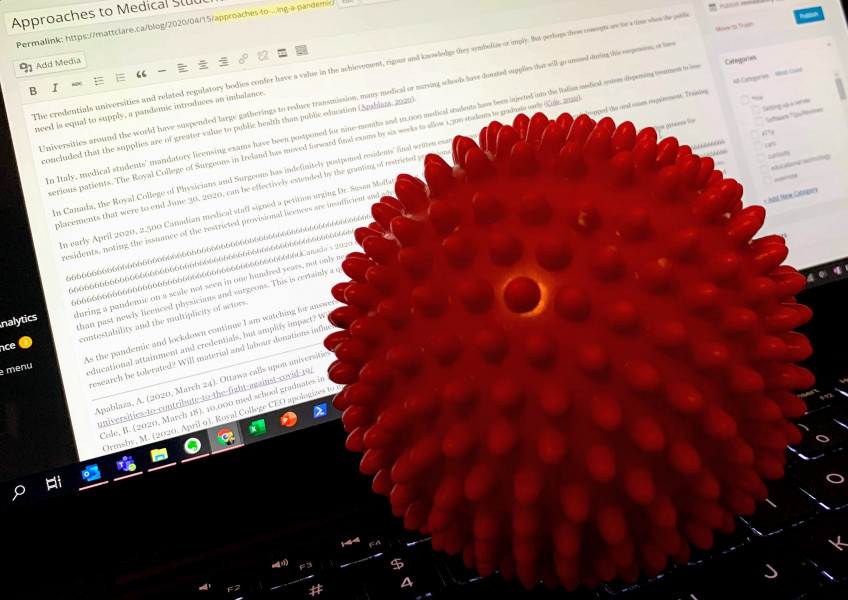Charging My EV in Ontario
Thu Oct 2 23:27:59 2025 EDT (-0400 GMT)Charging my EV
An EV that can Level 3 fast charge on the road and a home parking situation that allows you to charge overnight makes EV charging simple. Also, not stopping for gas anymore has benefits.

It’s a lot of power!
Moving a vehicle takes a lot of energy. The big positive for petroleum fuel is that it’s extremely energy dense.
When you charge an EV with a level 2 home charger, when it powers on its drawing into your charger/vehicle as much power as your whole house was drawing as much power as your house plus both your neighbours combined!
We have a household electrical use meter. A few lights, WiFi, home security, etc. is a load of 0.5 kWh. The clothes dryer, air conditioner and stove all add about 2 kWh each. The highest we’d seen the meter was 11.5 kW demand one Sunday with all of those appliances going, plus the microwave (there’s a10kWh alarm – I turned off!). One hot Friday night in August we got home from the movies and plugged in the EV6 and drew 15.47 kW demand!

Some Battery Principles
Yes, the battery can degrade! And it’s the most valuable part of the vehicle!
That said, a battery of that size doesn’t degrade in the same way a smartphone’s can because of the affordances of the non-pocket-sized design, thanks to active cooling/heating and smart charging. Kia warrantees the battery out to 100,000Km. After that, I’m on my own.
The other thing to understand is charging speed. All modern batteries have a Battery Management System (BMS) that slows down their charging around 75% because of what I call the crayon box problem – that is, it’s easy to jam the crayons into the crayon box right up until the last few, when it’s much harder to find a spot for the remaining crayons. With battery charging this affects the speed. The lesser issue with a full battery is the sophisticated battery management logic might also be avoiding cells that have questionable health, but when the battery is charged to 100% it’s forced to use cells it might otherwise be sparing.
This is why I have the EV6 set to charge to a maximum 80%. This is also why you often hear of the EV6, EV9 and the Ioniq 5 & 6 charging described as “10% to 80% in 18 minutes on a 350 kW fast charger”. 18 minutes is fast! But that’s also the battery’s speed sweet spot.
Charging Terminology
Here’s a summary of North American EV charging levels
Level 1 (120V AC)
- Power: ~1.4 kW
- Speed: ~5–8 km of range per hour
- Use case: Overnight trickle charging at home or emergencies
- My EV6: 10% to 80% charge time, about two days!
- I leave the Level 1 charger in my car as the emergency, very slow, charger.
Level 2 (240V AC)
- Power range: 3.3 kW ? 19.2 kW depending on charger and vehicle onboard charger (OBC) capacity
- Speed range:
- Lower end (3.3–6.6 kW): ~15–40 km of range per hour
- Mid-range (7.2–11 kW): ~40–70 km of range per hour
- High-end (19.2 kW): up to ~120 km of range per hour (rare, mostly high-capacity home installs or commercial chargers)
- Kia EV6 / Hyundai Ioniq 5 has a 11 kW onboard AC charger, so they’ll take full advantage of most Level 2 setups.
Level 3 / DC Fast Charging (DCFC)
- Power range: ~50 kW to 350 kW (depending on station and vehicle support)
- Speed: 350 kW charger (with 800V EVs like EV6/Ioniq 5/Taycan): ~1,000+ km/hour peak (but only for part of the charging curve)
- A must have for a road trip. This is the EV feature I recommend anyone who is considering an EV insist on (or buy a hybrid). If you know why a Level 2 charger is all you need, you don’t need my advice.
All batteries are direct current (DC) but power is distributed as alternating current (AC) because it’s easier to transmit. A big development in EV’s ~20 years ago was the concept that the vehicle carries the AC:DC converter, the onboard charger, to simplify the charger and interoperability. With the onboard charger important care for the vehicle is rolling around with the vehicle.
Then came DC fast charging. The voltage is much higher and the AC:DC conversion required is now heavy-duty, and because of this is the conversion is part of the charging infrastructure, not inside the car. The car needs to trust the charger more and coordinate more. It’s also more expensive.
A Level 1 charger can be lifted and installed with one hand, a Level 2 needs two hands, and a Level 3 needs one small crane.
Oh, and the Tesla charge connectors versus J1772 and CCS1 connector. North America is moving to Tesla’s North American Charging Standard (NACS). NACS is better. The best example being J1772 supports Level 1 and 2, but the “combo” J1772/ CCS1 connector is needed for Level 3 – where NACS is the same connector for all 3.
Tesla deserves credit for getting their network in all the best spots first – like the Trans-Canada highway.
This is why I have an A2Z NACS to CCS adapter. Glad the dueling standards is over. It’s regrettable that it happened.
Public Charging
It has a deserved bad reputation. But it’s only getting better, and in the greater Toronto area, it’s been pretty good.
For good or for bad, it’s tied up with the “app economy”.
All the charger networks operate by having the driver download an app, enter credit card information, and somehow associate you with the charger you’re standing in front of and how to bill you.
Most charging networks insist on you carrying a balance (reducing their credit card merchant fees, and, maybe you’ll abandon your balance) and there’s a promise of cross-network access from most networks – but I’ve only tried it once and was not surprised it didn’t work.
I mostly use Charge Point, as it’s the network deployed at Brock University and City of Burlington locations. Charge Point offers a tap card if you don’t want to use a smartphone/app (or want a backup).
Charging at Brock University works well for me, as there is a set of Level 3 chargers. If I ever forget to charge overnight, I’ll stop at the DC fast charger for 10 minutes, maximum. At Brock, that’d be about $6.
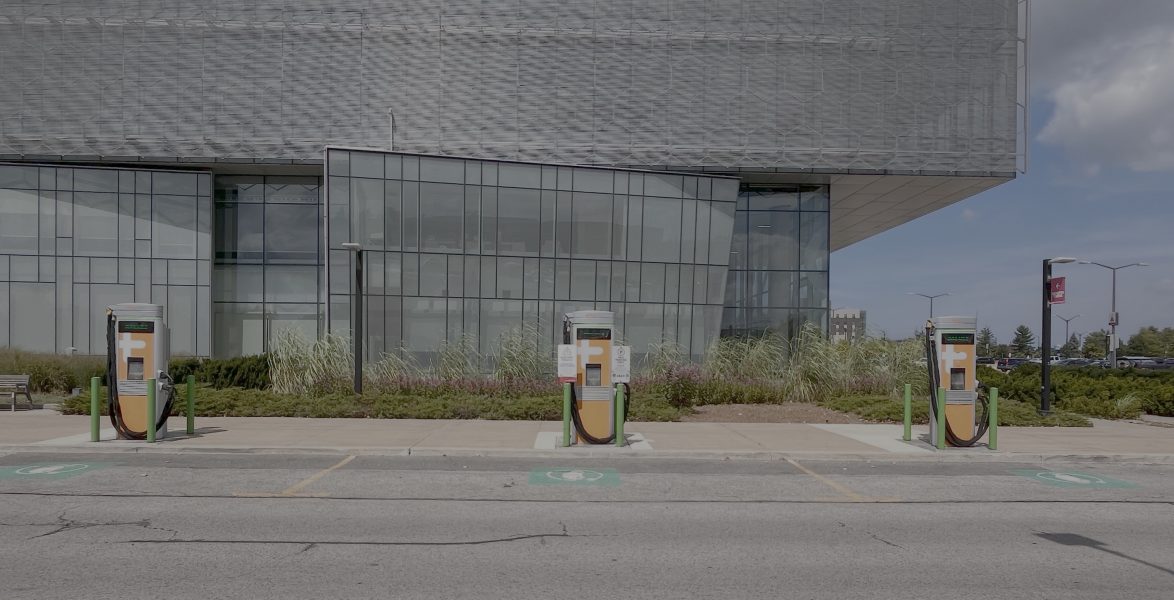
Free charging was pretty cool when it was a thing, but it probably needs to go. Where I live in Burlington, EV charging is free! But, [https://www.burlingtontoday.com/local-news/burlington-to-monitor-ev-charger-use-before-setting-new-fees-10952810 ](Burlington city council is considering setting a price for EV charging). It’s hard to justify property taxes subsidizing EV charging at this point. One EV’s charging session could be a regular household’s full day of use! It’s also a deterrent for EV chargers being installed in more locations, because they can’t compete with free.
I do try to grab a free charge whenever I’m near a free city charger, while I can.
Home Charging
It’s pretty simple to plug the EV in at night and have the vehicle ready to drive its full distance the next day. My EV6 even lets you schedule the climate control to start while it’s plugged in (Yes, lots of vehicles have key-fob or app-based remote start, but it’s nice that EV’s momentary status as a “household appliance” lets you simple schedule it, without extra services and I simply don’t like empty vehicles idling, because at best 10% of the engine’s energy is going to climate control, here, it’s 100%).
My commute to work and back is 150km, round-trip. It takes about 40% of the battery capacity (it used to take 30% of my Mazda3’s fuel tank).
I bought a United Chargers Grizzl-E Ultimate 48A charger. Firstly, it’s quality Canadian product (along with [the Classic) and secondarily, it can give my EV6 its maximum 11.5kWh. It’s faster than all the public Level 2 chargers I’ve used.
I chose the Ultimate because of, well, a coupon, and the “smart” features allows me to set a schedule and monitor things on my phone. Those are thing most EVs can do with their onboard software too, but happy to have the Grizzl-E do it (and Hyndai/Kia, anything app-based requires a monthly service fee).
Once I bought the Grizzl-E Ultimate charger, I discovered that there’s a sophisticated web interface too. However, the Grizzl-E Ultimate charger’s web interface does not require a password to access it by default. Even if the owner sets a password etc. for their account with the smartphone app, the charger is fully controllable by anyone on the same network until a password is set! I contacted United Chargers and they promised to at least update their documentation (no action yet).
I also created an integration into Home Assistant. My Home Assistant custom component for Grizzl-E chargers, which notes the security issue!
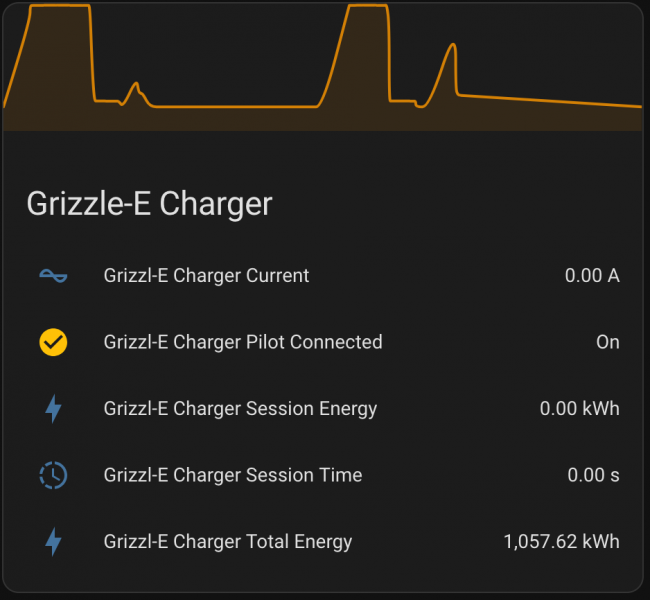
As for the installation, I hired an electrician to run the 30’ *4-6* AWG (some thick copper!). It was a short run from the breaker to my garage. As the family’s bikes occupy my winter garage spot in the spring and summer, I made a modification to our 18-year-old of garage door to allow the cable to pass under it without wear and keep the critters out.
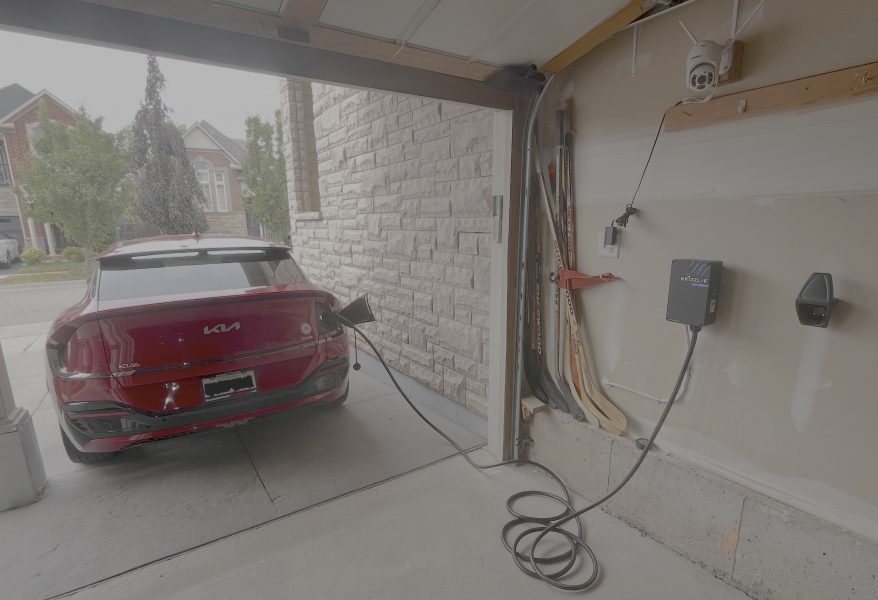
Since I made my little notch and pivoting brush, I’ll “shame” some local high-voltage charger cables being abused by the garage door.
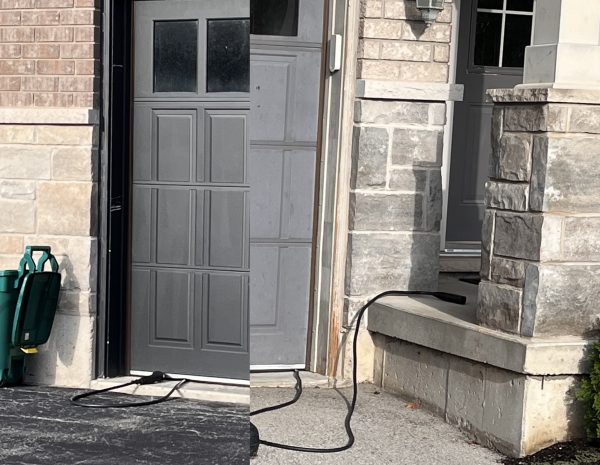
Home Charging: Cost
First, it should be noted that Ontario’s electricity prices are artificially low for all Ontarians. Ontario electricity prices are not just low for low-income households or light users, like in other jurisdictions. In Ontario, tax dollars subsidize all home electricity bills.
Burlington Hydro is one of six electricity distributors with not just Time of Use (TOU) billing, but also has Ultra Low Overnight (ULO) prices, deliberately targeted for home EV charging.

Time of Use (TOU)
| Periods | Day of Week and Time | TOU Prices (c/kWh) |
|---|---|---|
| Off-Peak | Weekdays 7 pm to 7 am, and all-day weekends and statutory holidays | 7.6 cents per kWh |
| Mid-Peak | Weekdays 7 am to 11 am, and 5 pm to 7 pm | 12.2 cents per kWh |
| On-Peak | Weekdays 11 am to 5 pm | 15.8 cents per kWh |
Ultra-Low Overnight
| Periods | Days and Times | ULO Prices (c/kWh) |
|---|---|---|
| Ultra-Low Overnight | Everyday 11 pm to 7 am | 2.8 cents per kWh |
| Week-end Off-Peak | Weekends and Holidays 7 am to 11 pm | 7.6 cents per kWh |
| Mid-Peak | Weekdays 7 am to 4 pm and 9 pm to 11 pm | 12.2 cents per kWh |
| On-Peak | Weekdays 4 pm to 9 pm | 28.4 cents per kWh |
So, should we switch? Well, it’s not that simple.
The EV6 draws a lot of power! But, as a family, we’ve been pretty good at running all our appliances during the Off-Peak periods. Our coffee maker has a thermal carafe and is scheduled to grind the beans and heat up that water at 06:45 before Mid-Peak starts at 07:00.
I set the Grizzl-e to charge the EV6 as if I were only using the ULO prices through September 2025.
It’s not clear if ULO is worth it. TOU is off-peak from 7 to 7 (19:00 to 07:00). ULO is On-Peak until 21:00, and it’s 28.4 cents per kWh, not just 15.8 cents per kWh. Would the EV charging be enough to make it worth switching to ULO? Or would we also need to start the dishwasher and clothes washer at 23:00, not the 19:00 they’re smart(ish) settings have them scheduled to start at. It’s easy to start a load of laundry at 21:00, move to the dryer at 22:00 – moving the clean laundry to the dryer at midnight is a bigger lifestyle change.
Burlington Hydro also has a portal where you can download a CSV of your usage. ChatGPT and I wrote a python script to compare what September cost us under TOU and under ULO.
September 2025, with the EV6 charging overnight, costs us $99.37 under TOU. If we were billed under ULO it would have been $95.83. A potential $3.54 saving. For comparison, in September 2024, we paid $64.40, 2023 it was $53.83. We are using much more home energy with the EV charging, but the difference between a cold September 2023 and the very warm September 2025 (much more air conditioning use in 2025) is still only one week’s worth of gasoline costs for the Mazda3 in extra home electricity.





